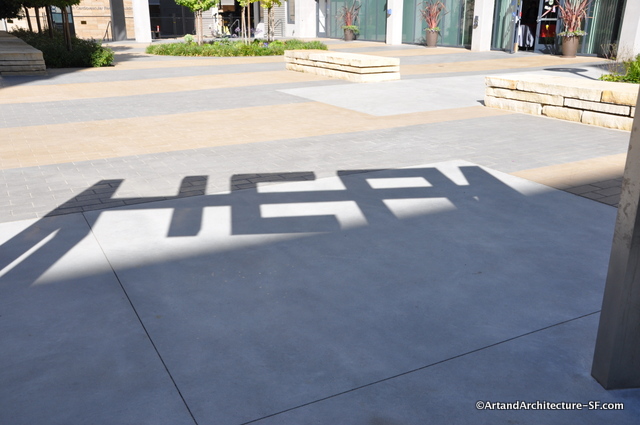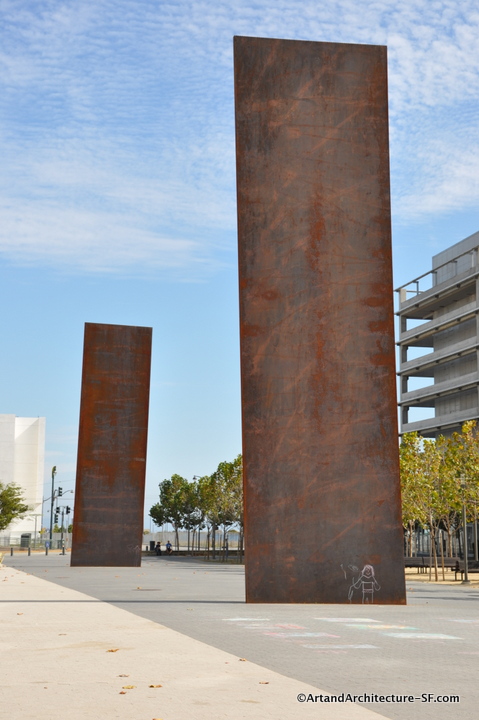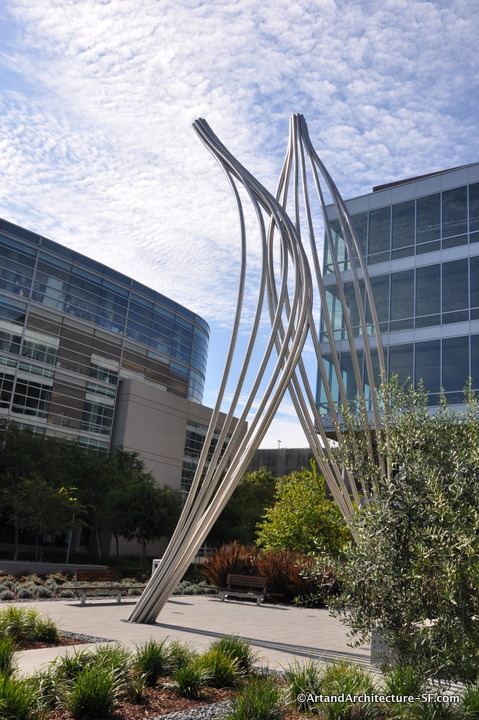Roy McMakin’s untitled collection of furniture was installed in July 2004. His materials include concrete, fiberglass, wood, bronze, enamel, steel, and stone. The piece uses an ultra-functional double-sided concrete bench design devised by the artist, which seems to have been arranged in a regular pattern around the perimeter of Mission Bay’s primary outdoor space. But the bench module has then been transformed, and rearranged in all kinds of different ways, and also reproduced in four shades of red and orange polyester.
It is as if the occupants of nearby buildings had come out and arranged the outdoor furniture and then made it their own. The installation extends across two acres and combines 125 different items, including a number of laboratory “minus 80” freezers and cardboard “banker’s boxes” reproduced in enamel. There are contemporary disposable plastic patio chairs, 19th century wood schoolroom chairs, and Eames side chairs – all cast in bronze. There are also natural boulders, bronze tree stumps in place of some of the planted trees (and reproducing their bark) , and bronze replicas of weathered planks.







